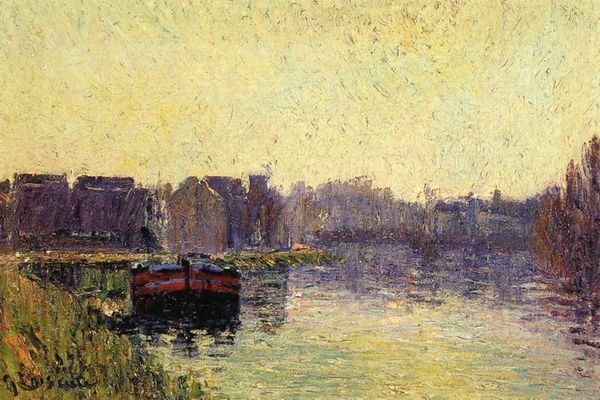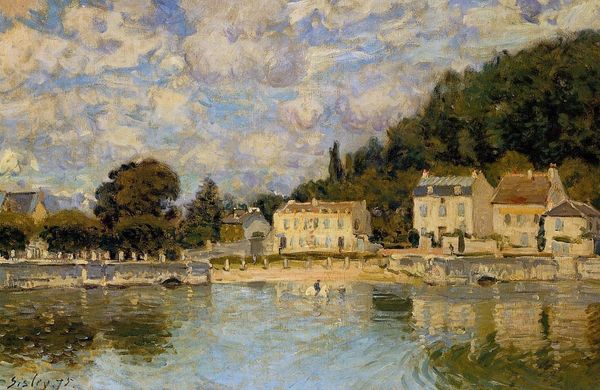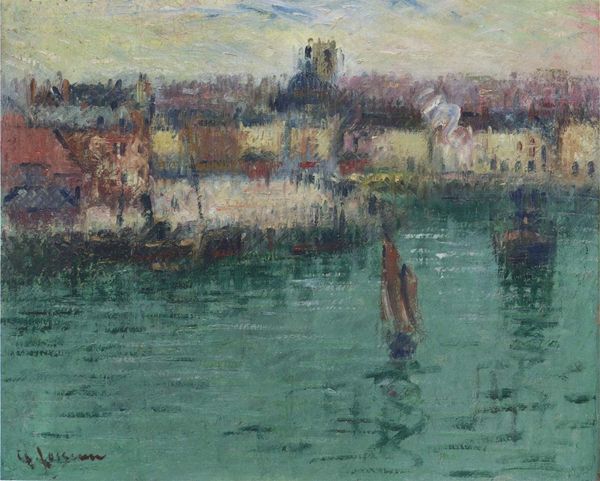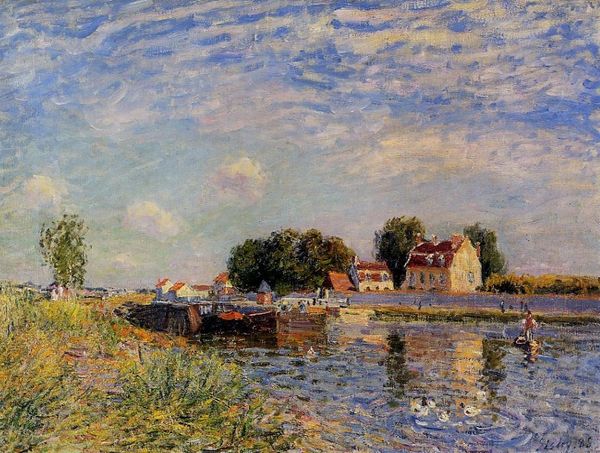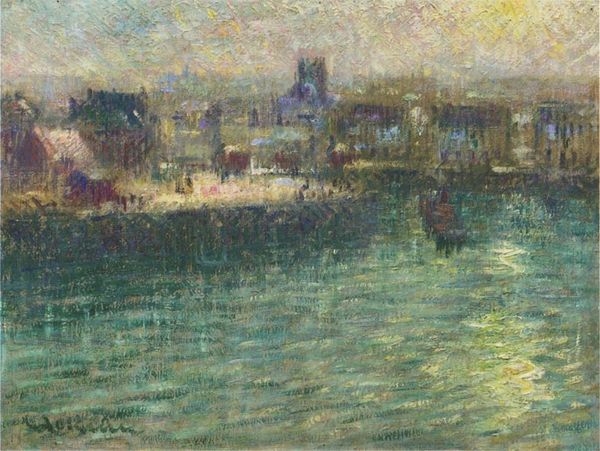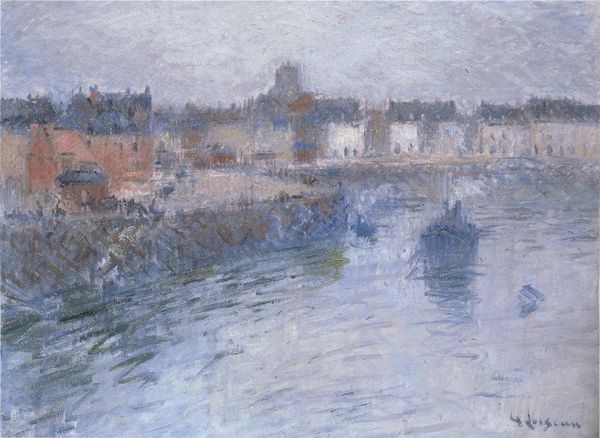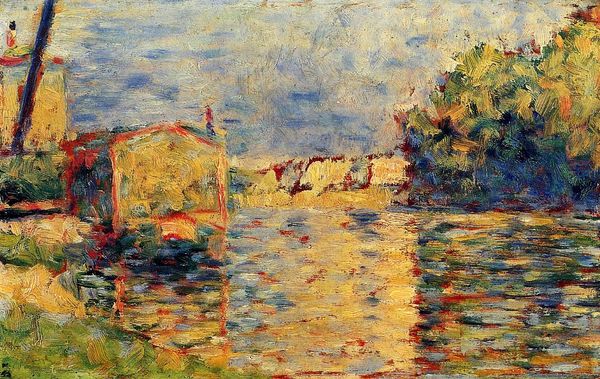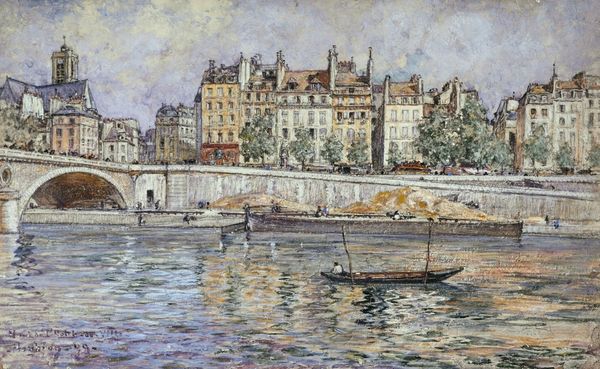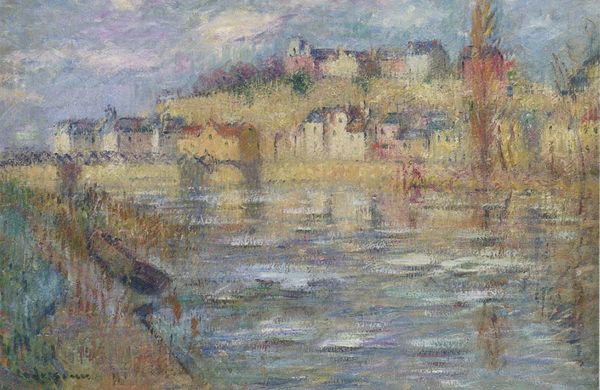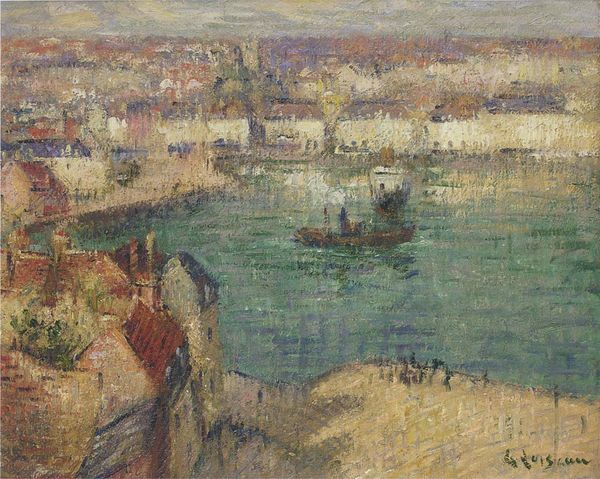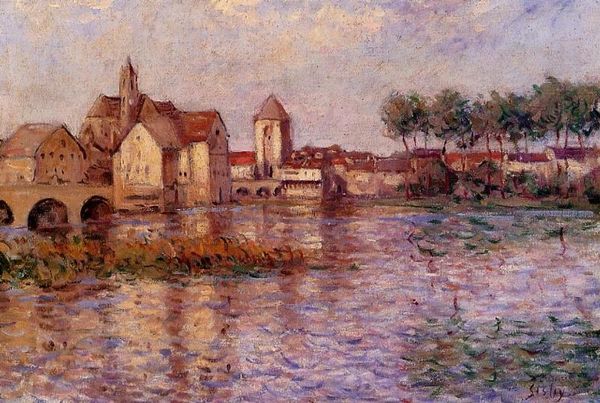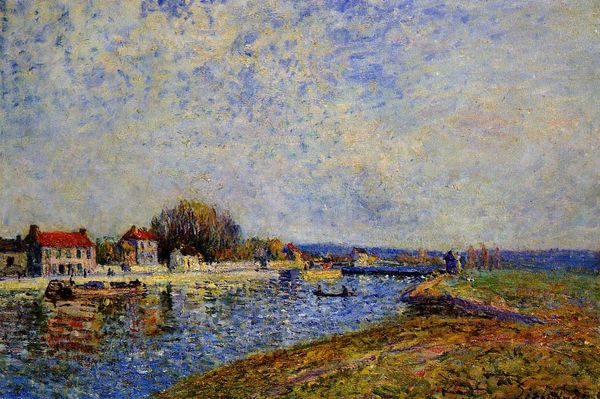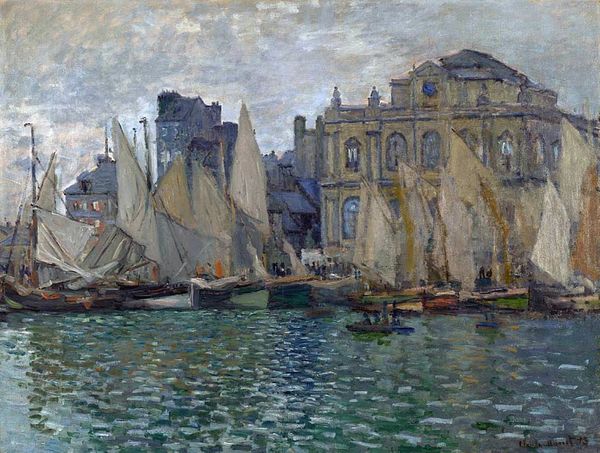
Copyright: Public domain
Curator: Looking at Konstantin Korovin’s "Paris. Seine," painted in 1902, I'm immediately struck by the dynamic interplay between light and the tangible world. The texture of the impasto seems to vibrate. Editor: There’s a haziness to the scene, almost dreamlike. The architecture blends with nature, reflecting how deeply entwined urban development and landscape became. Tell me more about how this particular piece fits into Korovin's broader body of work. Curator: Korovin was heavily influenced by French Impressionism, and that's evident in his broken brushstrokes and the emphasis on capturing fleeting moments. He adopted the plein-air approach, and that choice allowed for direct observation and immediate engagement with the subject. It's fascinating to see how the industrial activity on the river Seine—those tugboats chugging along—became just another motif to explore. Editor: It is striking how that river traffic isn't separate from the landscape, but a visual representation of Paris as a locus for both art and industry at the turn of the century. How do you think the contemporary critics reacted to his Impressionistic cityscapes? Curator: Interestingly, Korovin often faced criticism for his "sketchy" style, as many saw it. Remember, academic painting still held considerable sway at the time. Yet, this directness is precisely what makes his work so appealing to modern eyes. By embracing this particular way of seeing the world he created enduring visual documents of his time. Editor: That direct engagement is precisely why I find the focus on materiality and technique here so compelling. The physical act of applying oil paint in these short, choppy strokes really does connect us to Korovin's lived experience in early 20th-century Paris. There's also something interesting about painting this view en plein air because we understand from history how cities would transform from the industrial revolution at that time. It adds another layer to the material and means of the work. Curator: Indeed, and thinking about that transformation underscores how Korovin's painting functions as a social record. "Paris. Seine" reflects the city's ongoing negotiations between tradition and modernity, nature and industry. Editor: It makes me appreciate even more the socio-political context in which this landscape was rendered. Thank you for offering a deeper understanding of this artwork. Curator: And thank you, your materialist lens helped clarify how artistic technique becomes a portal into lived reality.
Comments
No comments
Be the first to comment and join the conversation on the ultimate creative platform.
